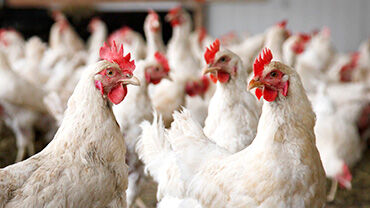Surveillance report: Avian influenza overview (November 2017 – February 2018)
The “Avian influenza overview” report is published quarterly and provide an update of the developments of avian influenza viruses in EU/EEA and worldwide, in particular with a view to describe the evolution of virus spread from certain regions towards the EU. In case of significant changes in the epidemiology of avian influenza, these reports could be needed more frequently.
The report is published jointly by the European Food Safety Authority (EFSA), the European Centre for Disease Prevention and Control (ECDC) and the European Union Reference Laboratory for Avian influenza (EURL). Avian influenza is an infectious viral disease in birds, including domestic poultry. Avian influenza is mainly found in birds, but under certain circumstances infections can also occur in humans even though the risk is generally very low.
Executive summary
Between 16 November 2017 and 15 February 2018, one highly pathogenic avian influenza (HPAI) A(H5N6) and five HPAI A(H5N8) outbreaks in poultry holdings, two HPAI A(H5N6) outbreaks in captive birds and 22 HPAI A(H5N6) wild bird events were reported within Europe. There is a lower incursion of HPAI A(H5N6) in poultry compared to HPAI A(H5N8). There is no evidence to date that HPAI A(H5N6) viruses circulating in Europe are associated with clades infecting humans. Clinical signs in ducks infected with HPAI A(H5N8) seemed to be decreasing, based on reports from Bulgaria. However, HPAI A(H5N8) is still present in Europe and is widespread in neighbouring areas. The majority of mortality events of wild birds from HPAIV A(H5) in this three-month period involved single birds. This indicates that the investigation of events involving single dead birds of target species is important for comprehensive passive surveillance for HPAI A(H5). Moreover, 20 low pathogenic avian influenza (LPAI) outbreaks were reported in three Member States. The risk of zoonotic transmission to the general public in Europe is considered to be very low. The first human case due to avian influenza A(H7N4) was notified in China underlining the threat that newly emerging avian influenza viruses pose for transmission to humans. Close monitoring is required of the situation in Africa and the Middle East with regards to HPAI A(H5N1) and A(H5N8). Uncontrolled spread of virus and subsequent further genetic evolution in regions geographically connected to Europe may increase uncertainty and risk for further dissemination of virus. The risk of HPAI introduction from Third countries via migratory wild birds to Europe is still considered much lower for wild birds crossing the southern borders compared to birds crossing the north-eastern borders, whereas the introduction via trade is still very to extremely unlikely.
Download








